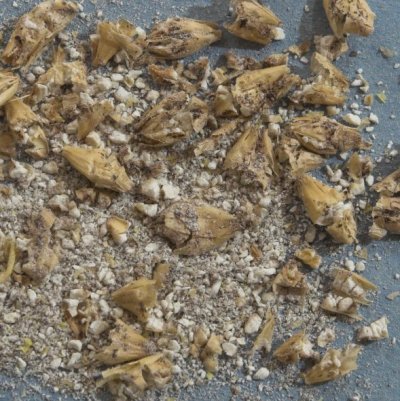hlmbrwng
Well-Known Member
Our last brew was an imperial stout. It was our first all-grain brew. Shooting for an OG of approximately 1.120, we had plenty of grain in our mash. I was not expecting a high efficiency, but what we got was pretty damn low. Somewhere under 60%. Depending on which calculator I use, it is either about 60% or 54%. We needed to add a lot of DME at the end of boil to hit our target gravity.
We are using a rectangular cooler with a copper manifold for a mash tun. Single-infusion mash (held 60 minutes), with batch sparge (held 15 minute). The pre-boil volume was on target.
I even showed my brew diary, in which I write every detail down, to the LHBS employees and they said that everything appeared right. I even talked to them about the water profile, pH and all. They said the only thing that they could think of is that it was a problem with the grain crush.
For our next brew, we ordered from the same online store (I am withholding the name so that I can get an unbiased opinion about the crush - and if there is an issue I will talk to them about it). This time I took photos of the 2-row malt. I grabbed a handful of grain, separated out the grains that were still whole, and calculated what percentage of the grain they made up. Of course, this does not account for the finely crushed grain that is at the bottom of the bag, so the calculation is probably off a bit.
If a grain was crushed at all, I considered it part of the weight that was crushed. For a handful, I got 9.8 grams of crushed grain and 0.9 grams of whole grains. Total: 10.06 grams, with the uncrushed grain making up 8.9% of the total weight.
What do you think?
Photo 1: Handful of grain

Photo 2: Close-up

Photo 3: Separation of grain

Photo 4: Uncrushed grain

We are using a rectangular cooler with a copper manifold for a mash tun. Single-infusion mash (held 60 minutes), with batch sparge (held 15 minute). The pre-boil volume was on target.
I even showed my brew diary, in which I write every detail down, to the LHBS employees and they said that everything appeared right. I even talked to them about the water profile, pH and all. They said the only thing that they could think of is that it was a problem with the grain crush.
For our next brew, we ordered from the same online store (I am withholding the name so that I can get an unbiased opinion about the crush - and if there is an issue I will talk to them about it). This time I took photos of the 2-row malt. I grabbed a handful of grain, separated out the grains that were still whole, and calculated what percentage of the grain they made up. Of course, this does not account for the finely crushed grain that is at the bottom of the bag, so the calculation is probably off a bit.
If a grain was crushed at all, I considered it part of the weight that was crushed. For a handful, I got 9.8 grams of crushed grain and 0.9 grams of whole grains. Total: 10.06 grams, with the uncrushed grain making up 8.9% of the total weight.
What do you think?
Photo 1: Handful of grain

Photo 2: Close-up

Photo 3: Separation of grain

Photo 4: Uncrushed grain




